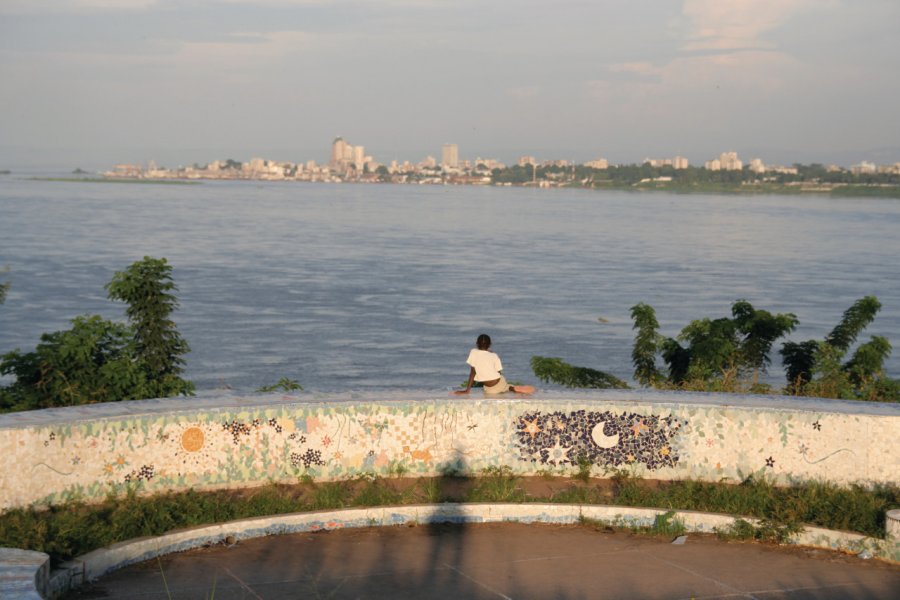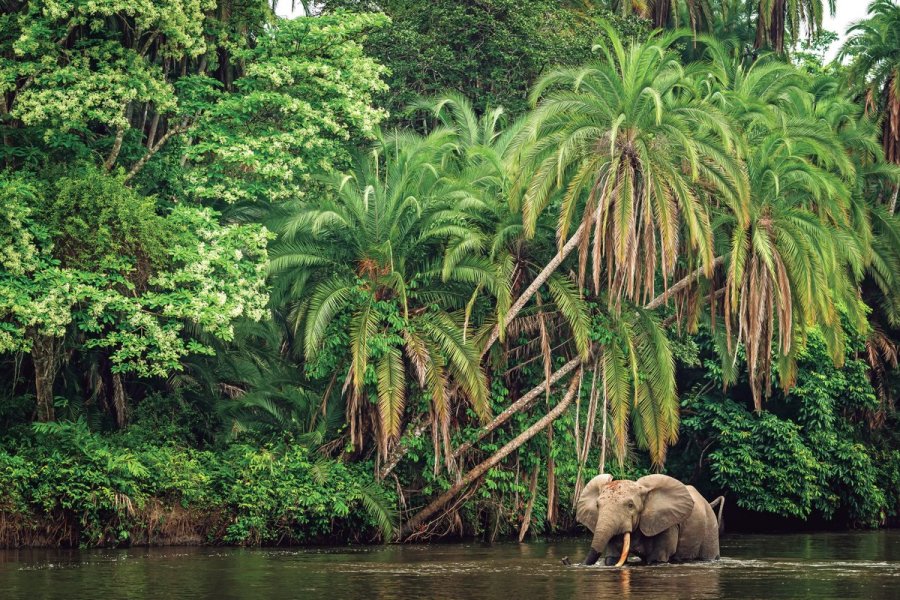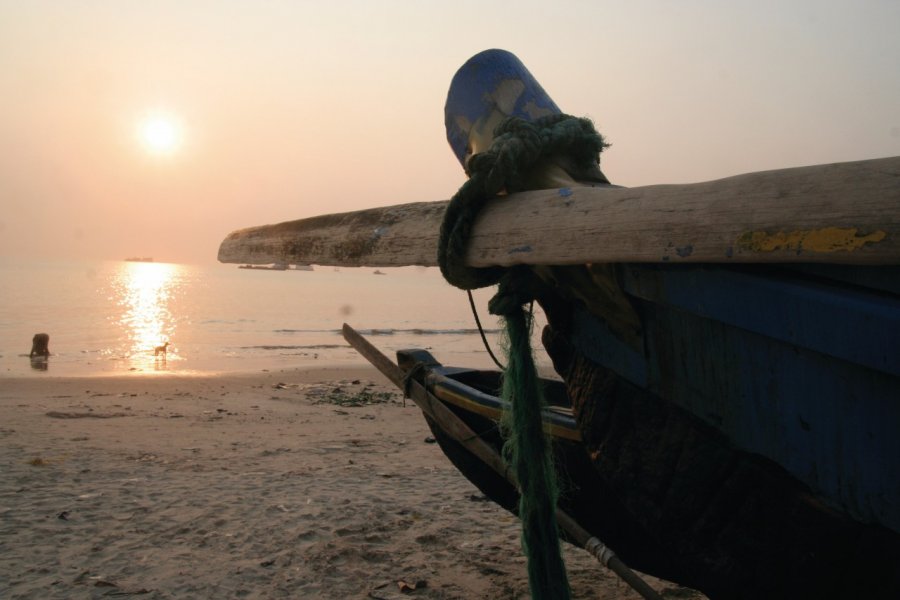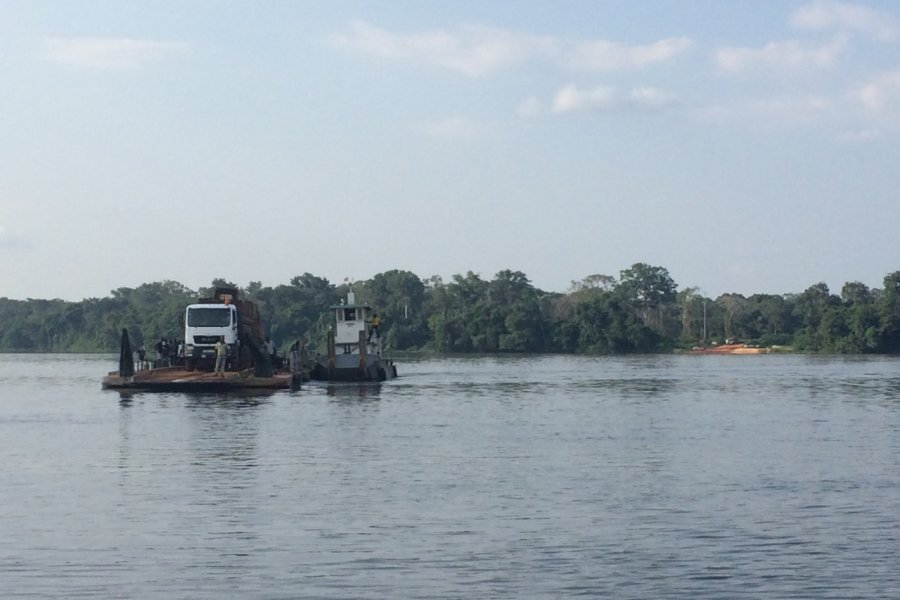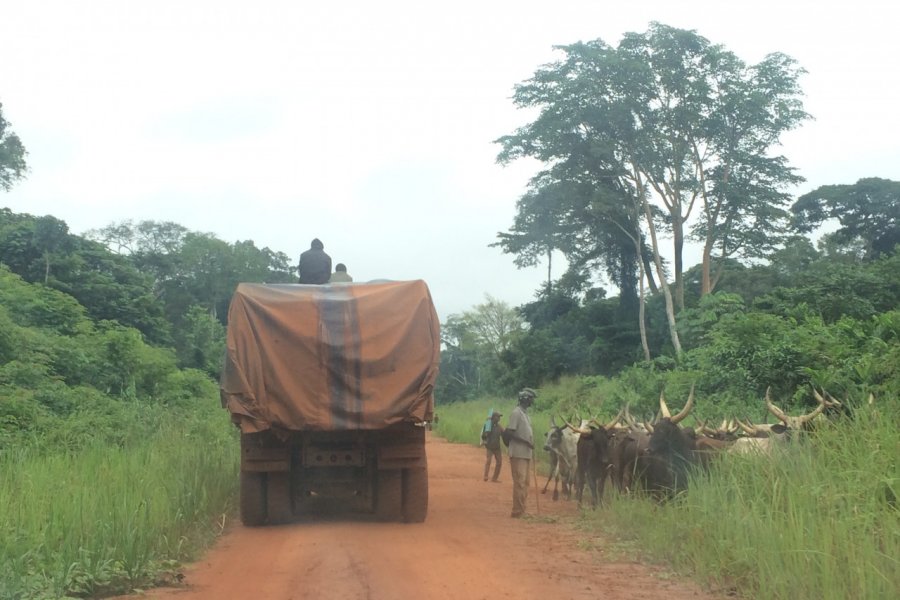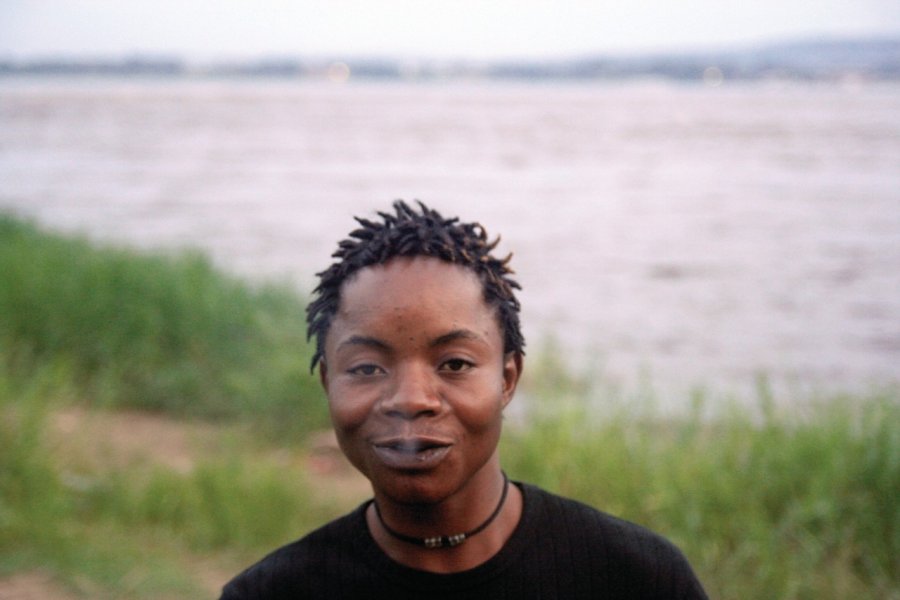Travel guide Congo Brazzaville
Hello powerful Congo River with its majestic banks and wild rhythm, deserted beaches of fine sand bordered by mangrove swamps and laterite gorges of intense red in the south. Bonjour exuberant primary forests in the north, shrubby savannah as far as the eye can see on the Batékés plateaus, parks and animal reserves(Mount Fouari Reserve, Nouabalé-Ndoki National Park), which are not very frequented and are rich in rare species, are scattered throughout the country. Brazzaville, the busy capital where the political destiny of the country is played out, contrasts with the industrial Pointe-Noire, whose stakes lie elsewhere on the side of the petrodollars.
No matter how one approaches the official Republic of Congo, or "Congo-Brazza" for those who are intimate with it, its breathtakingly beautiful lands invite the traveler to free himself from preconceived ideas, to clear the way, to get out of the clichés in order to reach the heart of Central Africa, deep and wild, while touching with his finger the extreme vitality of a vibrant, endearing, philosophical, unique people, happy to live. Even the best tourist guide to Congo-Brazzaville could not accurately convey this moral wealth. So no more hesitation: the Congo, still unknown, deserves at least a trip!
What to see, what to do Congo Brazzaville?
-
Book an activity
-
Customized travel
- The most beautiful cities Congo Brazzaville
When to go Congo Brazzaville ?
Before asking the question "when to go to the Congo", one must first ask "what for? If the trip involves travel, especially by road, the dry seasons are best - the short dry season occurs in January and February, the long dry season from May to September. The short seasons (dry and rainy) are the hottest, with temperatures ranging from 30 to 35°C. The rains, especially during the short rainy season in March and April, come in the form of spectacularly violent storms. In conclusion, Congo can be visited all year round, but the most comfortable season in terms of climate and travel possibilities is undoubtedly the long dry season, even if, in visual terms, its leaden sky of a milky gray with a few scattered rays of sunshine makes it the least attractive of the seasons.
Suggested addresses Congo Brazzaville
Travel Congo Brazzaville
-
Find a hotel
-
Car Rental
-
International e-SIM package
-
Find a local agency
De ses deux principales villes, Brazzaville et Pointe-Noire, à ses parcs nationaux et réserves naturelles, la République du Congo est une destination pour les amoureux de la nature et les aventuriers. Avec un visa de 15 jours minimum, vous aurez le temps d’apprécier ses richesses naturelles, d’aller à la rencontre des gorilles, éléphants et buffles, et même de nourrir des chimpanzés. Au nord-ouest du Congo, le parc d’Odzala recèle l’une des plus grandes forêts encore intactes de la planète, abritant une nature d'une incroyable diversité. En plus d’observer sa faune exceptionnelle, vous pourrez aller à la rencontre des autochtones et découvrir leur culture. Au sud, le littoral maritime invite au farniente sur les belles plages de Pointe-Noire. Tout au long de l’année, on peut y observer plusieurs espèces de tortues marines. Au large des côtes, en saison sèche, les baleines à bosse, quant à elles, offrent des spectacles saisissants.
Find unique Stay Offers with our Partners
How to go Congo Brazzaville
How to go alone
Going alone is possible. You can, from home, organize the broad outlines of your trip: duration, what you want to do, take your plane ticket and imagine a tour. However, you will not be able to finalize the details easily: frequent changes of days and hours of domestic flights, plane, boat or train schedules, changes of management on site...
How to go on a tour
The offers for Congo are essentially focused on the nature aspect of the country: visit of the parks and country reserves, the Batekés plateaus and other wild regions, discovery of the local fauna and flora. Many solidarity and ecotourism trips are also organized to live close to the local populations.
How to get around
Whether by plane, train, or boat, one thing is certain: you have to be patient when traveling in the Congo. Even if the transport network is becoming denser, due to oil and partnerships with other countries, punctuality is not always a must.
By car, the northern road is entirely paved, as is the road linking Brazzaville to Pointe-Noire. For any outing in the bush, a 4x4 is essential: it is recommended to take a driver and to travel in convoy.
Featured articles Congo Brazzaville
Discover Congo Brazzaville
A wild land in the heart of the Congo Basin, Congo has been inhabited since prehistoric times by the Akas, who were later joined by the Bantu ethnic group. The Portuguese arrived and set up the slave trade, followed by Savorgnan de Brazza, who convinced the kingdom to join forces with the French. Private companies shared the country and mistreated the local population. The affair caused a scandal before Congo gained its independence in 1960. From then on, politicians fought for power until civil wars broke out. Since the late 1990s, the country has been trying to recover with an economy based mainly on oil and timber. Although the Congo boasts an exceptional natural environment, tourists are still few and far between, due to high prices and poorly-developed infrastructure. Aware of its natural assets, the country wishes to turn to ecotourism and involve local populations.
Pictures and images Congo Brazzaville
The 12 keywords Congo Brazzaville
1. Abacos
Literally "down with the suit", also known as "counter-costume". Under the policy of returning to authenticity, the European suit was banished in favor of a smart, Africanized outfit, a counter-suit. In concrete terms: a light shirt or jacket with cropped sleeves over pants of the same fabric, now a classic of African elegance.
2. Corolla

Car model manufactured by Toyota and used by Congolese cabs. "Pigeon wing", "Chicken leg", "Sarkozy" or "Benedict XVI", each model has been renamed according to aesthetic or event criteria. Usually purchased in Europe, the cars are shipped to the Congo, where they begin a second life.
3. Diattance
Sapper style: walk at a brisk pace, throwing your legs forward, feet slightly apart, crushing your heels with each step, head slightly raised. You can pause to raise your sunglasses, take out a handkerchief to wipe your forehead, or pull up your pants to show off your dress shoes.
4. Revival churches
Like many countries in Central Africa, the Congo has seen a proliferation of revivalist churches. In the country's two major cities, there is a different church for every neighborhood. Local television stations devote a large part of their programming to preaching, when they do not belong to large religious movements.
5. Gaddafi

A major oil producer, the country nevertheless experiences frequent shortages. Closed pumps, sleepy employees and long queues of cabs awaiting delivery. Gaddafis, the name given to black-market fuel dealers, cross the river with jerry cans to resell the fuel. The price doubles, or even more, if the shortage lasts.
6. Tar
Refers to the road, or more precisely, the surfaced road. The Pointe-Noire/Brazzaville - Brazzaville/Ouesso routes are, with a few exceptions, in very good condition. Secondary roads are usually laterite tracks which, during the rainy season, can become impassable in places if you don't have a 4X4.
7. Eat a thousand
This is the nickname (Mange mille in french) given by Brazzaville's cab drivers to the police officers who arrest them, referring to the name of a bird, the mange-mil. Since routine checks always result in an infraction, real or imaginary, they no longer ask what the fare is so that they can leave in peace... until the next time!
8. Mundele
If you're European, Oriental or mixed race, if you're not black in fact, you'll be the mundele, the white man. This is how you'll be addressed by children and adults alike, for a simple hello or just to get your attention. Originally, this Kikongo term referred to an idiot, someone who doesn't understand anything.
9. Nganda
A true Congolese institution, the nganda was originally a clandestine drinking establishment that also served as a restaurant. Since then, the term has been applied to all the country's popular restaurant-bars-dancings, where the atmosphere ranges from stunned to explosive. This is the ticket to Congolese nightlife!
10. Ntsamba

One of four types of palm wine, its name varies according to region, type of palm, harvesting method and consumption. Ntsamba is extracted from the heart of the palm tree by skilled "mafoutiers" who climb to the top of the tree to collect it in gourds. Depending on the degree of fermentation, it can be sweet or slightly sparkling.
11. Parisian
The Parisian is a Congolese living in the French metropolis, or having experienced his or her share of adventures and misadventures in the faraway capital. Every year, from June onwards, Parisians return to visit family and friends. This homecoming gives rise to great stories about life in a Paris more or less lived or fantasized.
12. Three pieces

Nothing sartorial this time, this is a popular dish in the Congo, also known as fumbwa. As its name suggests, it is composed of three essential ingredients: meat or fish, peanut paste and koko, finely chopped vine leaves. This spicy dish is often enjoyed in ngandas.
You are from here, if...
You call out "Hey Dad, hey Mom" in the street, in restaurants and in cabs, because you've quickly become accustomed to this disconcerting local practice.
Like the sapeurs, you'll be showing off on Matsoua Avenue, dressed in a designer suit and luxury shoes, just to show everyone what a class act you are!
You love grilled caterpillars and crickets, especially as an aperitif, with a cold Ngok, the local favorite.
At weekends, in the late afternoon, you head off to the ngandas and discos to unwind to the rhythm of Congolese rumba.
By car, you'll make your way through the traffic jams of Brazzaville or Pointe-Noire, dodging potholes with agility and criss-crossing the winding roads of Mayombe, where driving can sometimes be a real sport!
Stop at the roadside to enjoy a glass of palm wine with the locals.

